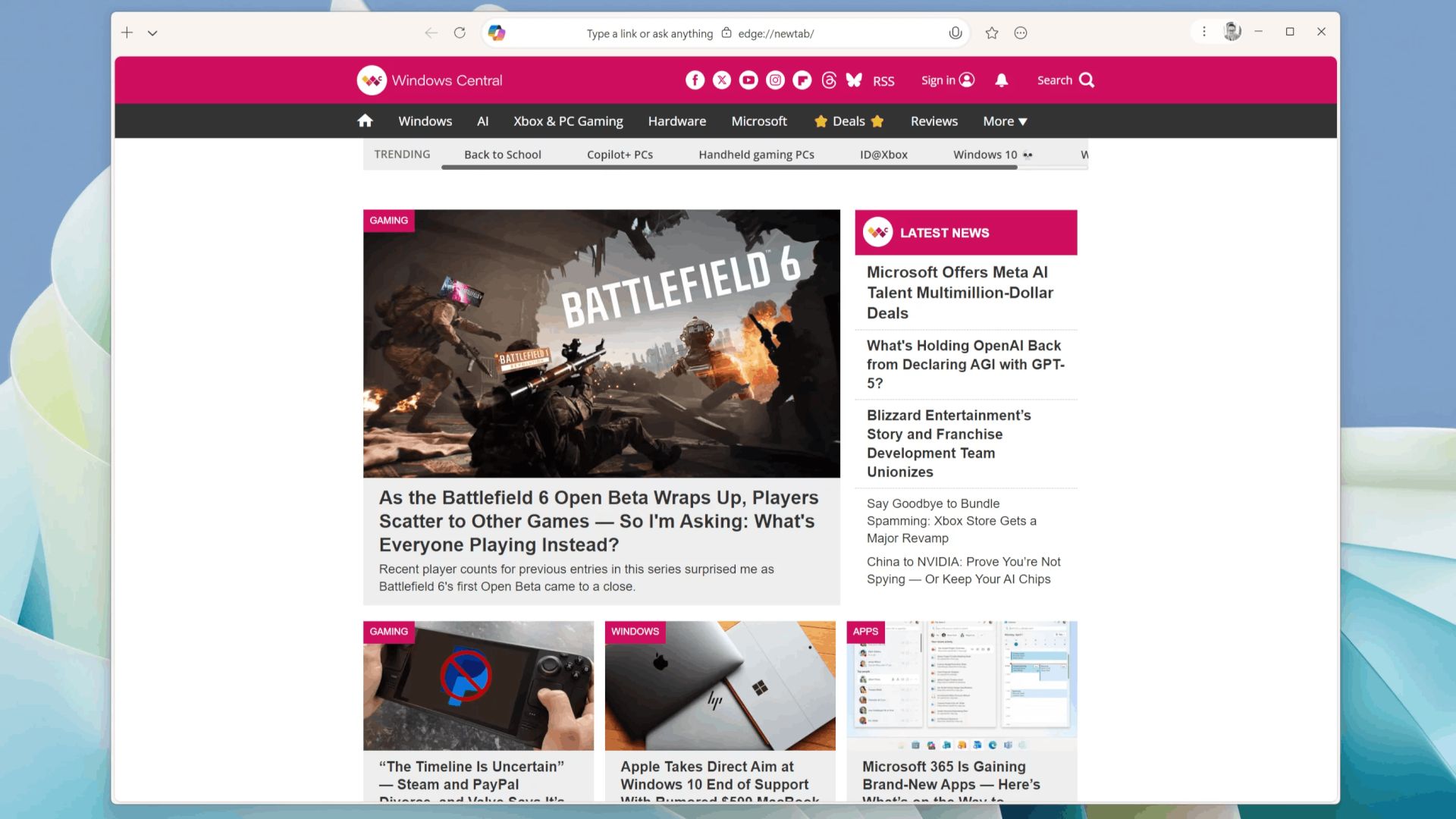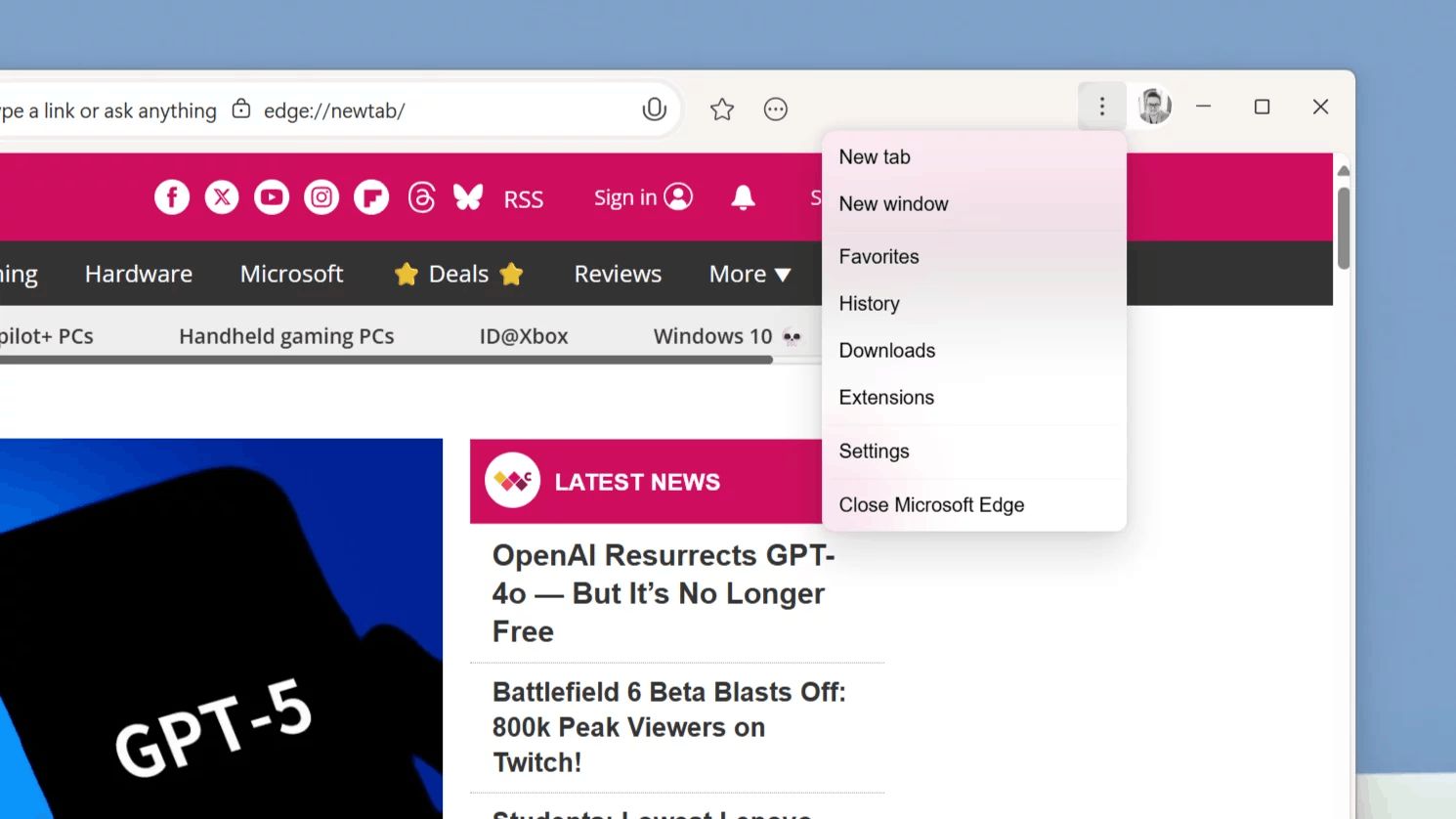Microsoft has created a new experimental user interface for Edge, codenamed "Olympia UI". The design focuses on interaction with Copilot through a simplified layout and restructured navigation. The company is believed to have abandoned this design in favor of an interface that mimics the Copilot app for Windows. However, the "Olympia UI" is still present in Microsoft Edge builds for the Canary channel.
Advertisеment

The address bar sits centrally at the top of the window, reduced in size and integrated with the Copilot assistant. It includes a microphone icon for immediate voice input. This change shifts focus from traditional browsing to Copilot/AI-assisted methods. The bar supports both web queries and AI-driven interactions.
Tabs are displayed as a vertical list in the sidebar, accessible via a button in the upper-left corner. Users can also switch to a horizontal tab layout positioned below the address bar. This contrasts with the standard placement above the address bar found in most browsers.

On the right side of the window, controls for bookmarks and a dropdown menu provide access to History, Downloads, and Settings. The overall layout feels drastically changes from the current Edge interface.


Some features remain non-functional, indicating the design is still under development. The most likely purpose is support for Copilot Mode, introduced in late July 2025.
Currently, enabling Copilot Mode in Microsoft Edge does not result in any significant changes to the browser's design. The only noticeable change is the move of the Copilot button from the right side of the window to the top of the address bar, which is exactly the same as its location in the "Olympia UI".
Although current Copilot Mode only moves the Copilot button to the address bar, future updates may introduce full interface changes based on Olympia UI.
This marks Microsoft’s second major attempt at redesigning Edge. In 2023, the company launched a version with rounded floating tabs aligned with Windows 11 aesthetics. That redesign was later discontinued without explanation. The current finding suggests Microsoft continues exploring alternative layouts to place AI in the center of its browser.
Support us
Winaero greatly relies on your support. You can help the site keep bringing you interesting and useful content and software by using these options:
